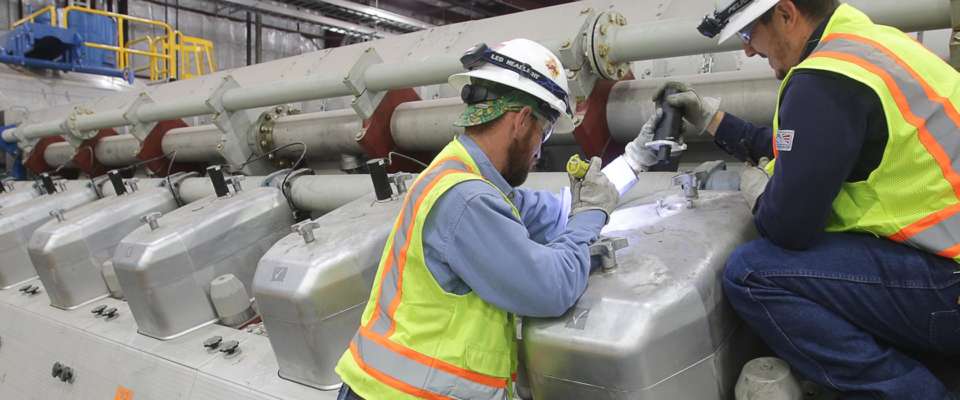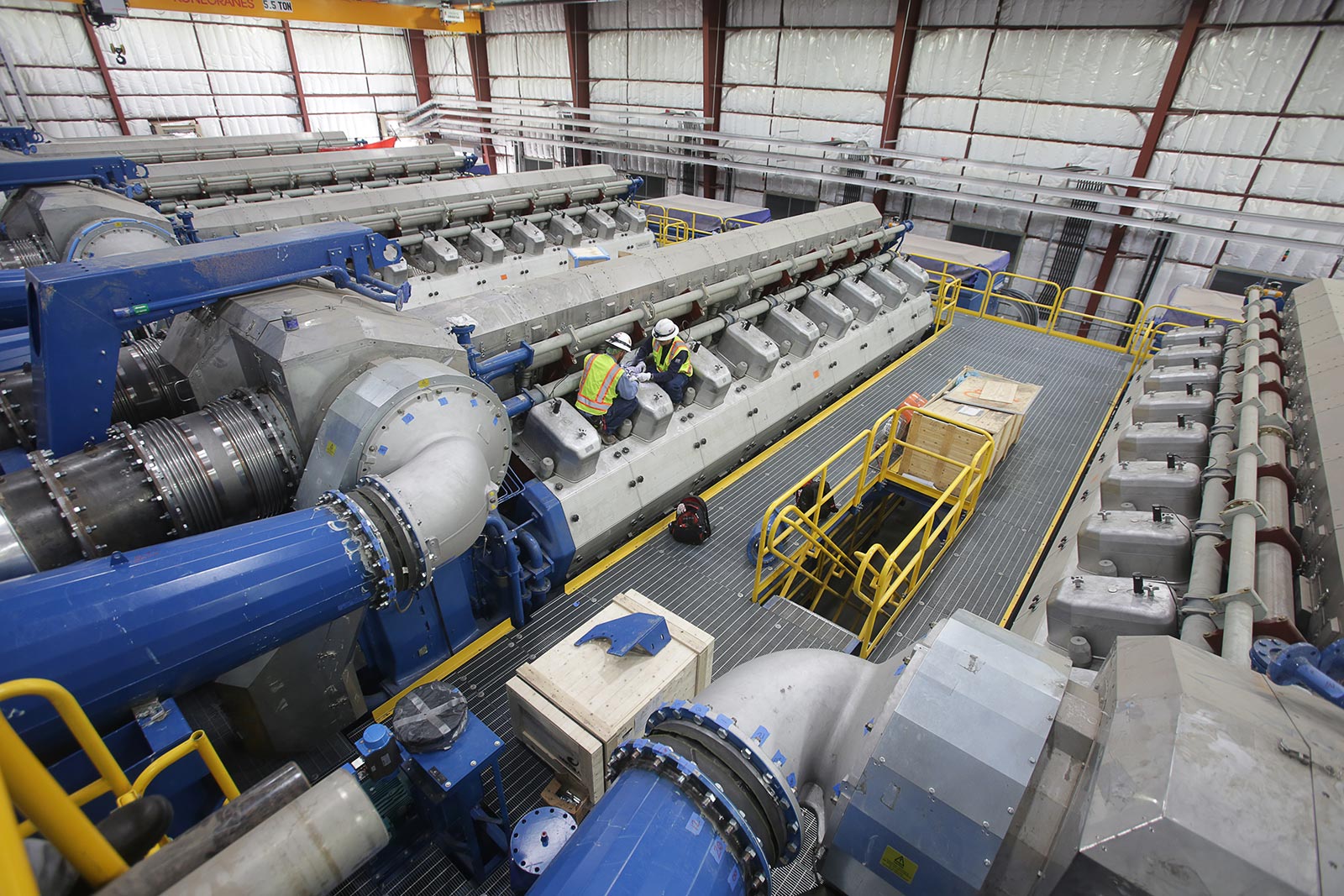
New Local Generators Support Expanded Use of Solar, Wind Resources
Efficient natural gas generators that began operating in December 2019 will support the expansion of TEP's wind and solar energy resources while using less water and reducing overall emissions at our largest local power plant.
The first five of 10 reciprocating internal combustion engine (RICE) generators at the H. Wilson Sundt Generating Station began operating in December 2019. The remainder came online in early 2020. Together, the units provide TEP with a new type of generating resource to support safe, reliable and affordable service for customers.
What Are RICE Generators?
The RICE units are essentially large natural gas-fueled versions of the internal combustion engines that power most automobiles. However, while most vehicle engines generate less than 300 horsepower, these units operate at 26,000 horsepower, producing about 18 megawatts (MW) apiece.
The new units will replace two older natural gas-fired units at Sundt, improving the plant’s performance while reducing operating costs, water usage and emissions.
Why Is This Technology Important in Supporting Renewable Energy?
Unlike conventional power plants, RICE units run efficiently and cost-effectively even while making abrupt and frequent adjustments to power output levels. That helps them compensate for the intermittent output of wind and solar resources, which are playing an increasingly prominent role in TEP’s energy portfolio.
TEP will more than double its wind and solar capacity with three new systems that are expected to be completed in 2021:
- A 250-MW wind system in southeastern New Mexico.
- A 100-MW solar array paired with a 30 MW battery storage system in Tucson.
- A 99-MW wind system in western New Mexico.
The output of these systems will vary depending on weather conditions and the time of day. The RICE units can adjust quickly to those changes, ramping up or down as production from renewables drops or surges. That’s important because energy generation and demand must be in precise balance at all times.

What Are the Other Benefits of This Technology?
- Improved efficiency: RICE units burn less natural gas to generate the same amount of energy as a conventional natural gas-fired generator. In fact, they are 40 percent more efficient than the units they are replacing.
- Lower emissions: Transitioning to the RICE generators will reduce nitrogen oxide emissions by 60 percent, contributing to cleaner air.
- Water savings: The RICE units will help reduce the use of water at the Sundt Generating Station by 70 percent – a savings of more than 455 million gallons annually.
More information about these and other improvements are available at tep.com/projects.
